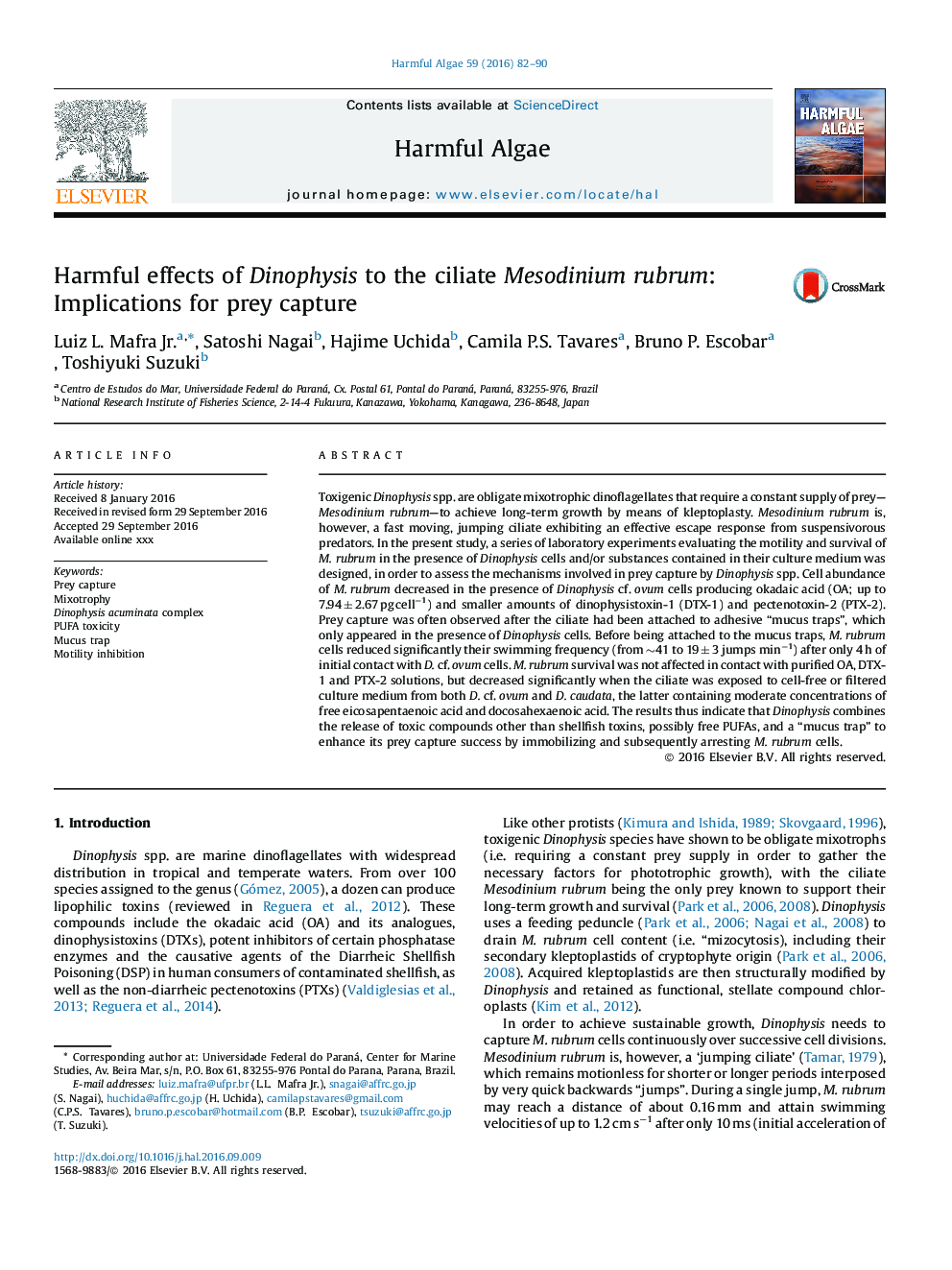| کد مقاله | کد نشریه | سال انتشار | مقاله انگلیسی | نسخه تمام متن |
|---|---|---|---|---|
| 6386118 | 1626913 | 2016 | 9 صفحه PDF | دانلود رایگان |
عنوان انگلیسی مقاله ISI
Harmful effects of Dinophysis to the ciliate Mesodinium rubrum: Implications for prey capture
دانلود مقاله + سفارش ترجمه
دانلود مقاله ISI انگلیسی
رایگان برای ایرانیان
کلمات کلیدی
موضوعات مرتبط
علوم زیستی و بیوفناوری
علوم کشاورزی و بیولوژیک
علوم آبزیان
پیش نمایش صفحه اول مقاله

چکیده انگلیسی
Toxigenic Dinophysis spp. are obligate mixotrophic dinoflagellates that require a constant supply of prey-Mesodinium rubrum-to achieve long-term growth by means of kleptoplasty. Mesodinium rubrum is, however, a fast moving, jumping ciliate exhibiting an effective escape response from suspensivorous predators. In the present study, a series of laboratory experiments evaluating the motility and survival of M. rubrum in the presence of Dinophysis cells and/or substances contained in their culture medium was designed, in order to assess the mechanisms involved in prey capture by Dinophysis spp. Cell abundance of M. rubrum decreased in the presence of Dinophysis cf. ovum cells producing okadaic acid (OA; up to 7.94 ± 2.67 pg cellâ1) and smaller amounts of dinophysistoxin-1 (DTX-1) and pectenotoxin-2 (PTX-2). Prey capture was often observed after the ciliate had been attached to adhesive “mucus traps”, which only appeared in the presence of Dinophysis cells. Before being attached to the mucus traps, M. rubrum cells reduced significantly their swimming frequency (from â¼41 to 19 ± 3 jumps minâ1) after only 4 h of initial contact with D. cf. ovum cells. M. rubrum survival was not affected in contact with purified OA, DTX-1 and PTX-2 solutions, but decreased significantly when the ciliate was exposed to cell-free or filtered culture medium from both D. cf. ovum and D. caudata, the latter containing moderate concentrations of free eicosapentaenoic acid and docosahexaenoic acid. The results thus indicate that Dinophysis combines the release of toxic compounds other than shellfish toxins, possibly free PUFAs, and a “mucus trap” to enhance its prey capture success by immobilizing and subsequently arresting M. rubrum cells.
ناشر
Database: Elsevier - ScienceDirect (ساینس دایرکت)
Journal: Harmful Algae - Volume 59, November 2016, Pages 82-90
Journal: Harmful Algae - Volume 59, November 2016, Pages 82-90
نویسندگان
Luiz L. Mafra Jr., Satoshi Nagai, Hajime Uchida, Camila P.S. Tavares, Bruno P. Escobar, Toshiyuki Suzuki,